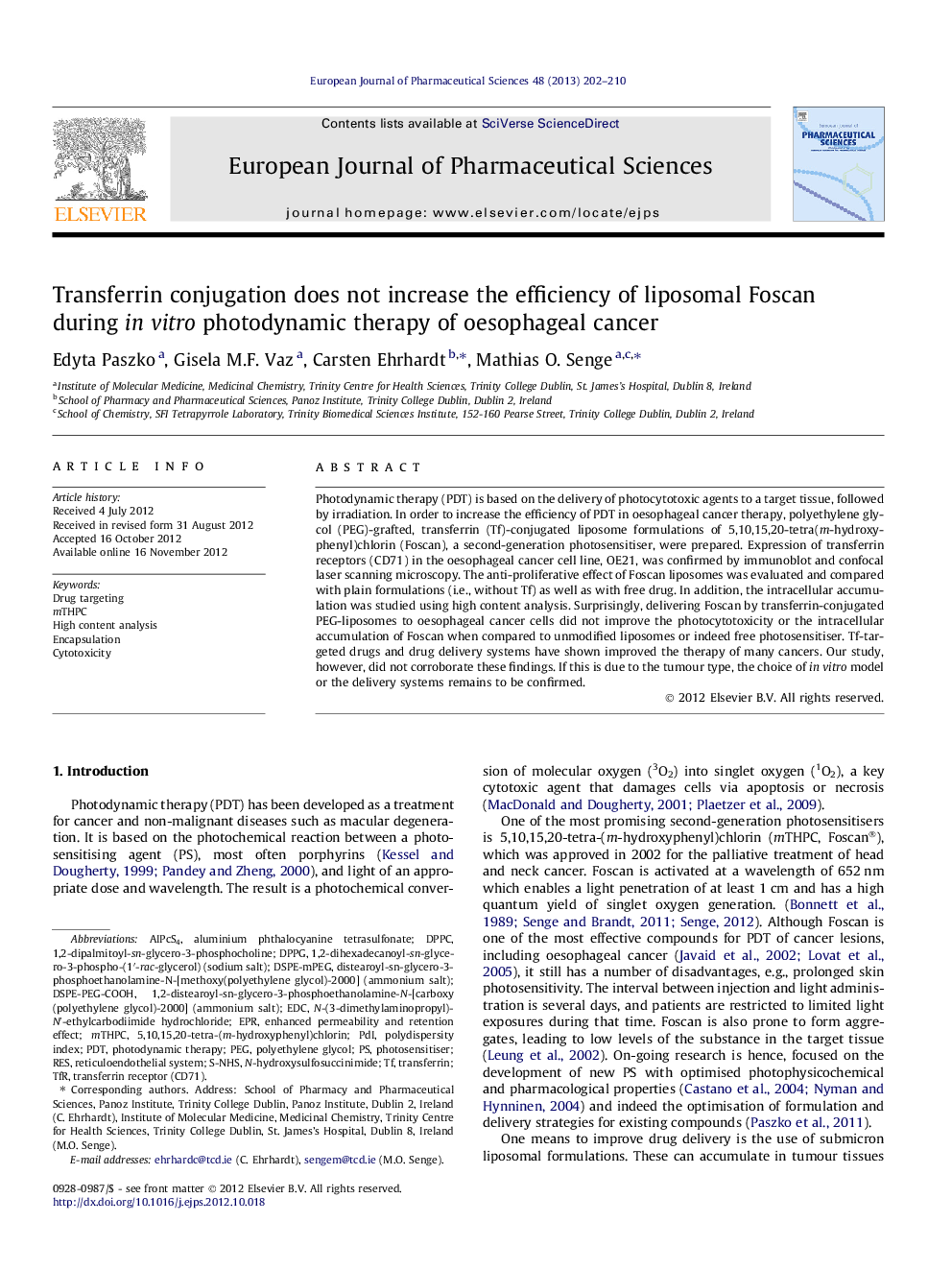| Article ID | Journal | Published Year | Pages | File Type |
|---|---|---|---|---|
| 2481033 | European Journal of Pharmaceutical Sciences | 2013 | 9 Pages |
Abstract
Photodynamic therapy (PDT) is based on the delivery of photocytotoxic agents to a target tissue, followed by irradiation. In order to increase the efficiency of PDT in oesophageal cancer therapy, polyethylene glycol (PEG)-grafted, transferrin (Tf)-conjugated liposome formulations of 5,10,15,20-tetra(m-hydroxyphenyl)chlorin (Foscan), a second-generation photosensitiser, were prepared. Expression of transferrin receptors (CD71) in the oesophageal cancer cell line, OE21, was confirmed by immunoblot and confocal laser scanning microscopy. The anti-proliferative effect of Foscan liposomes was evaluated and compared with plain formulations (i.e., without Tf) as well as with free drug. In addition, the intracellular accumulation was studied using high content analysis. Surprisingly, delivering Foscan by transferrin-conjugated PEG-liposomes to oesophageal cancer cells did not improve the photocytotoxicity or the intracellular accumulation of Foscan when compared to unmodified liposomes or indeed free photosensitiser. Tf-targeted drugs and drug delivery systems have shown improved the therapy of many cancers. Our study, however, did not corroborate these findings. If this is due to the tumour type, the choice of in vitro model or the delivery systems remains to be confirmed.
Keywords
DPPGRESDPPCPDIPDTTransferrinTFREDCmTHPCn-hydroxysulfosuccinimide1,2-dipalmitoyl-sn-glycero-3-phosphocholineN-(3-dimethylaminopropyl)-N′-ethylcarbodiimide hydrochloridehigh content analysisEPRPhotodynamic therapyCytotoxicityReticuloendothelial systempolydispersity indexPhotosensitiserEnhanced permeability and retention effectDrug targetingpolyethylene glycolPEGEncapsulation
Related Topics
Health Sciences
Pharmacology, Toxicology and Pharmaceutical Science
Drug Discovery
Authors
Edyta Paszko, Gisela M.F. Vaz, Carsten Ehrhardt, Mathias O. Senge,
